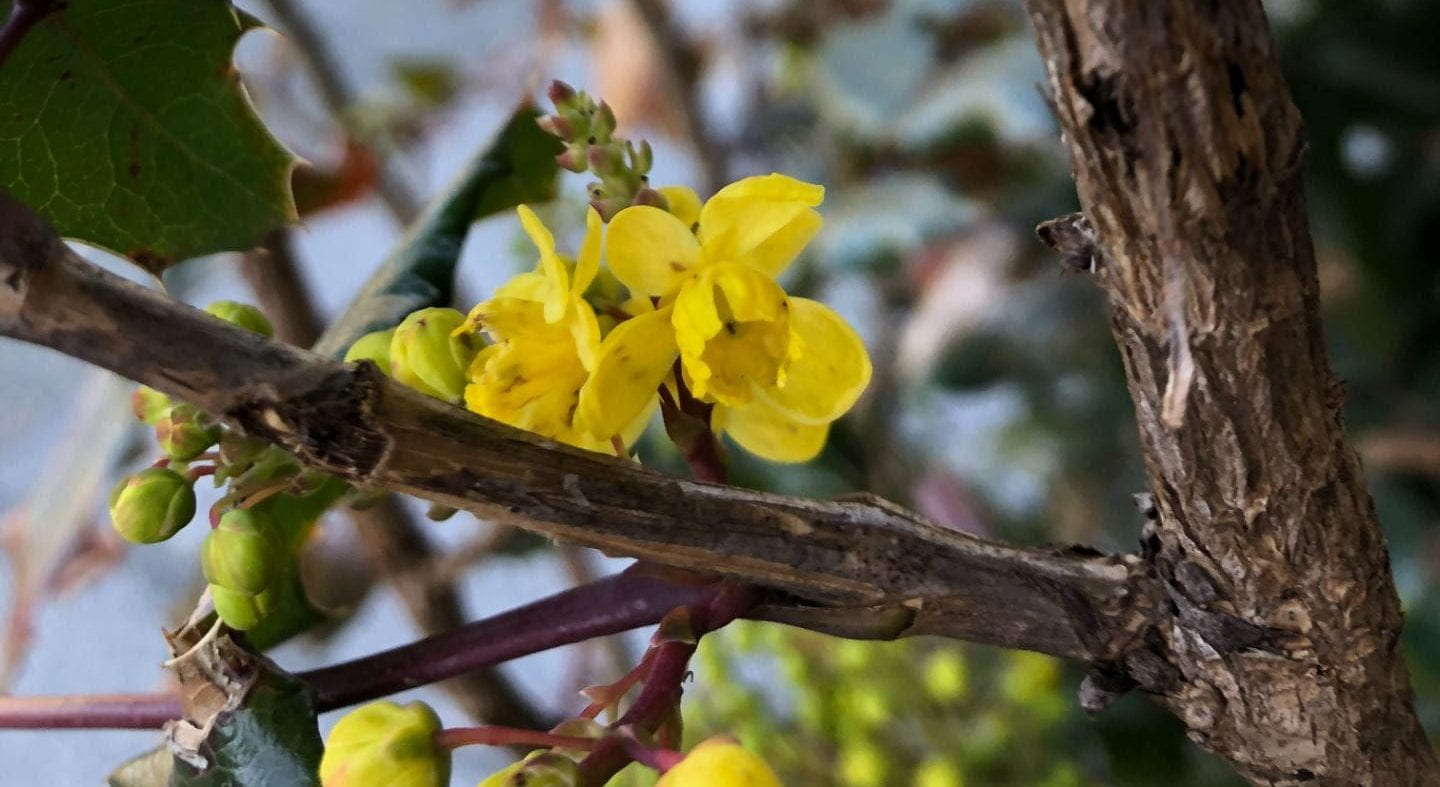Oregon Grape
Last updated March 29, 2021. All photos taken by the author. Most recent photos at end of post.
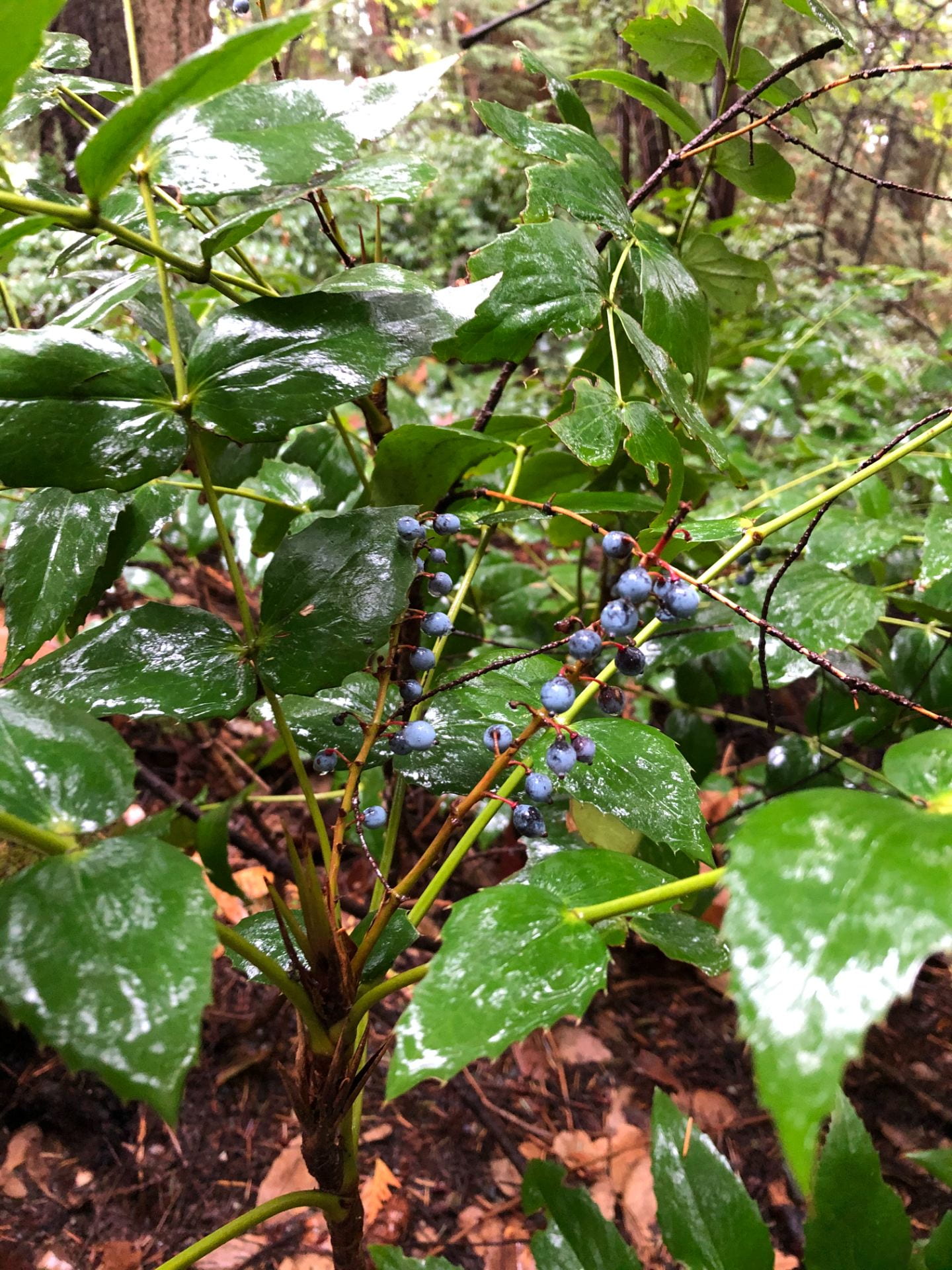
I love plants. I love them more than I love animals, with the exception of my family of course. Over the past few years I have become more and more interested in what plants are in my neighbourhood and why they are there. As I have tried to figure out which trees are which, and attempted to identify the weeds in my yard as native or invasive, I have developed a lot of respect for people who can easily identify trees and plants. It’s really challenging! So, I am now going to attempt to share some knowledge by pointing out plants that you could hopefully identify in your neighbourhood.
This week’s plant is Oregon Grape. There are two species found in British Columbia: Tall Oregon Grape (Mahonia aquifolium) and Dull Oregon Grape (Mahonia nervosa.) If you find a mature plant right now, it should have bluish clusters of berries. Nancy J. Turner, in her book Food Plants of Coastal First Peoples, says that the sour berries can be eaten right off the bush but nowadays are usually made into jelly or jam. In the late spring, Oregon Grape has beautiful clusters of bright yellow flowers. Tall Oregon Grape can grow to 10 feet tall while Dull Oregon Grape grows up to 2 feet tall. (Source: Gardening with Native Plants of the Pacific Northwest, 3rd Edition, by Arthur R. Kruckeberg and Linda Chalker-Scott).
More useful information after these pictures of Oregon Grape plants found around Burnaby!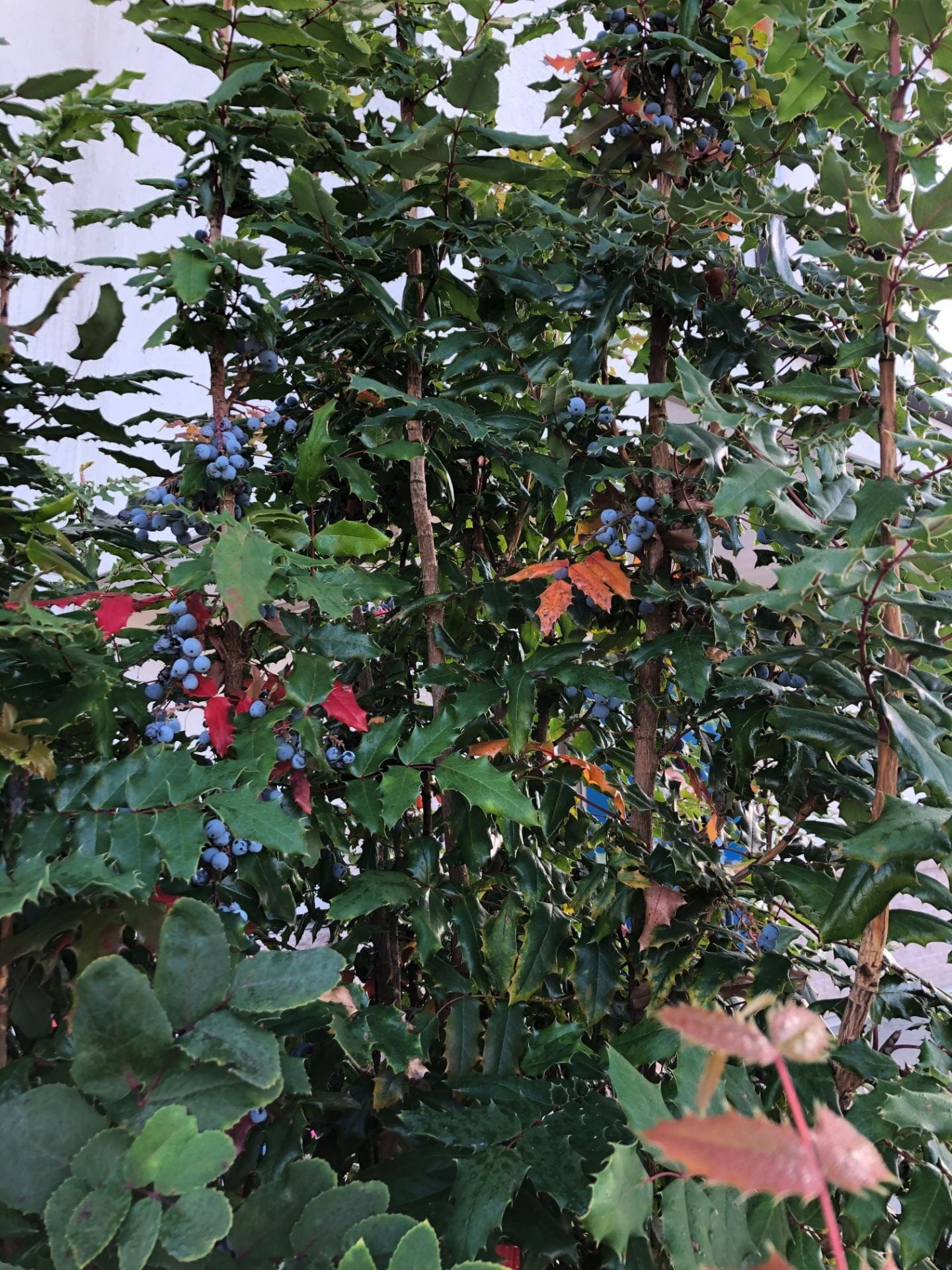
Tall Oregon Grape in a planter in a schoolyard.
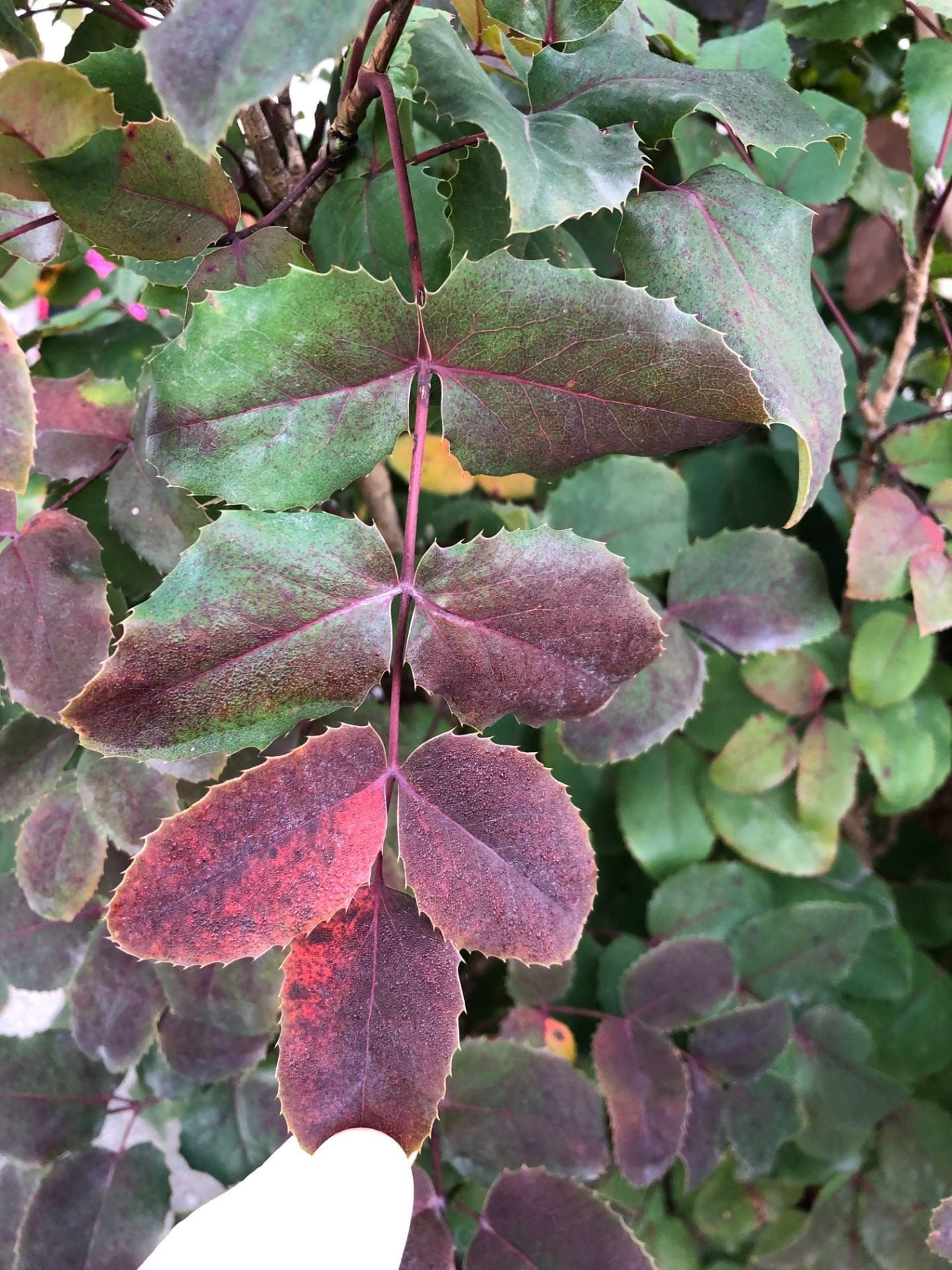

Dull Oregon Grape in a schoolyard garden trough. Note the 11 leaflets attached to the central rachis.


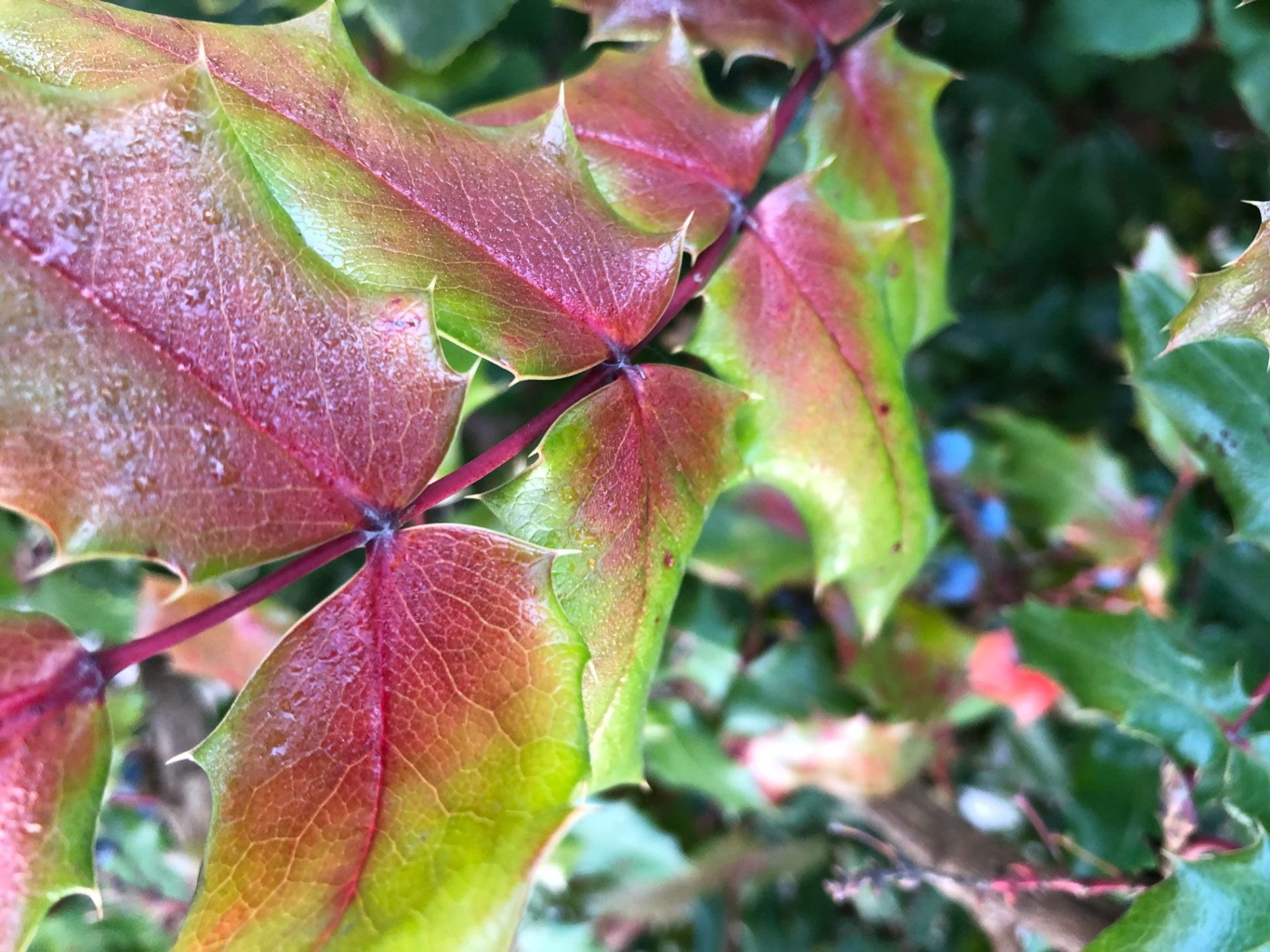
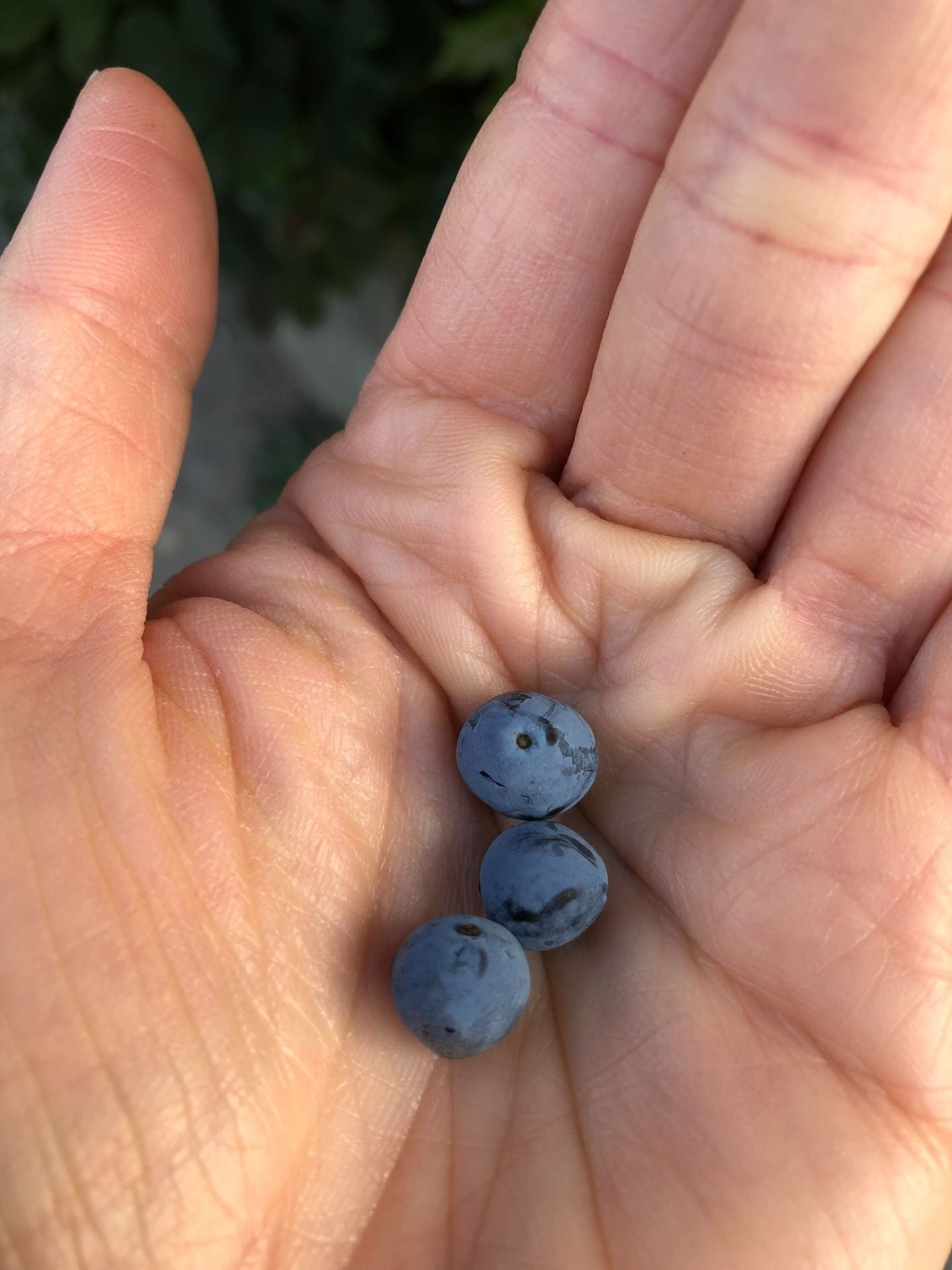



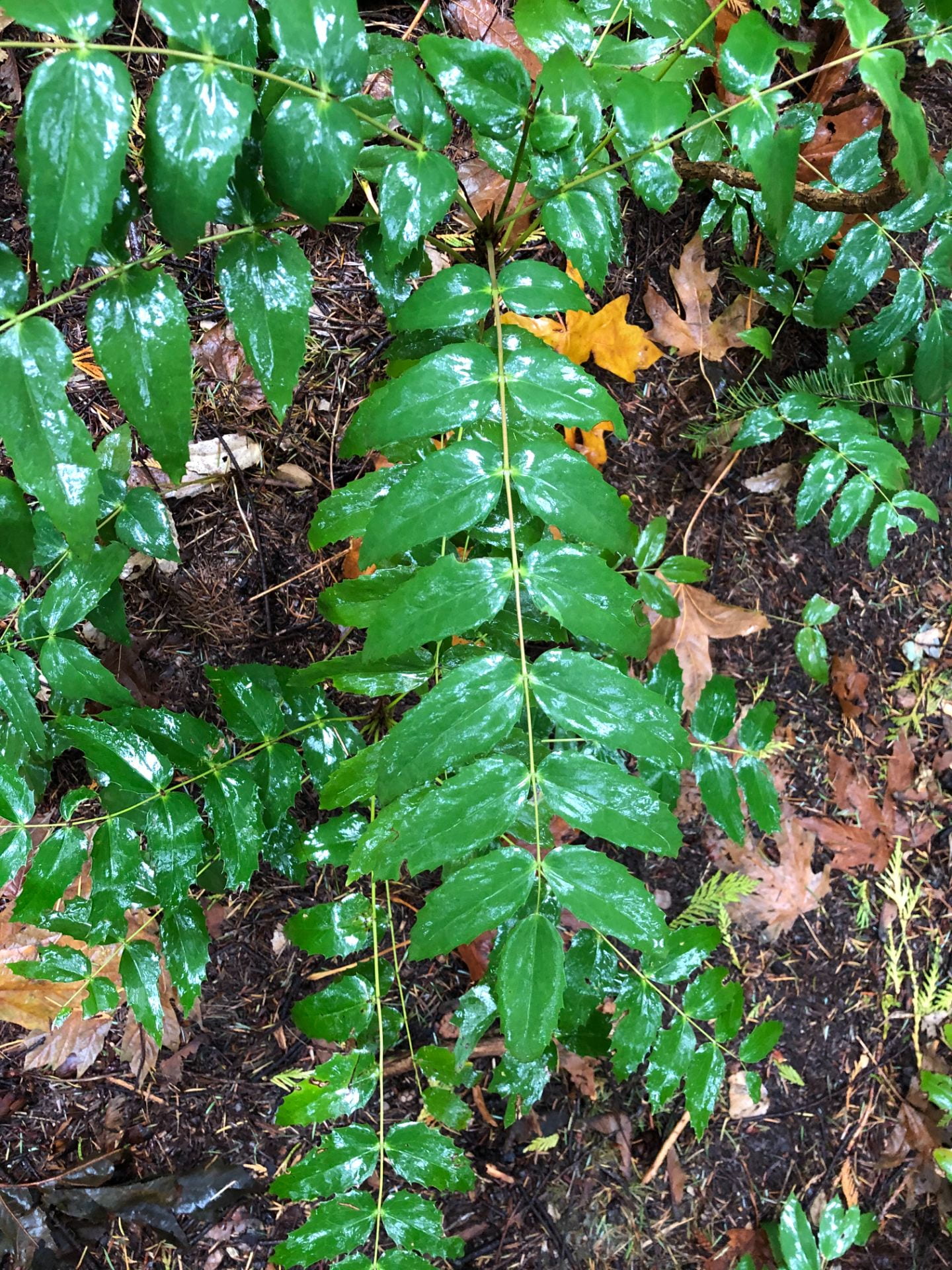
Another plant that may be confused for Oregon Grape, a native species, around here is English Holly which is an invasive species. Oregon Grape leaves are similar to Holly leaves in that they are thick and glossy and have spiny toothed margins (edges). Ouch! However, Holly leaves are simple meaning each leaf connects directly to the plant on its branchlets. Oregon Grape leaves are pinnately compound meaning many leaves are connected to a central rachis before connecting to the plant. For Oregon Grape, look for a long rachis with 5-7 leaflets (Tall Oregon Grape) or 9-15 leaflets (Dull Oregon Grape). Also, Holly has bright red berries, but Oregon Grape has dull bluish berries. Holly leaves are attached alternate to each other and Oregon Grape leaves are attached opposite. (The next three pictures below are all Holly plants). So, go outside, walk around, and identify some Oregon Grape!
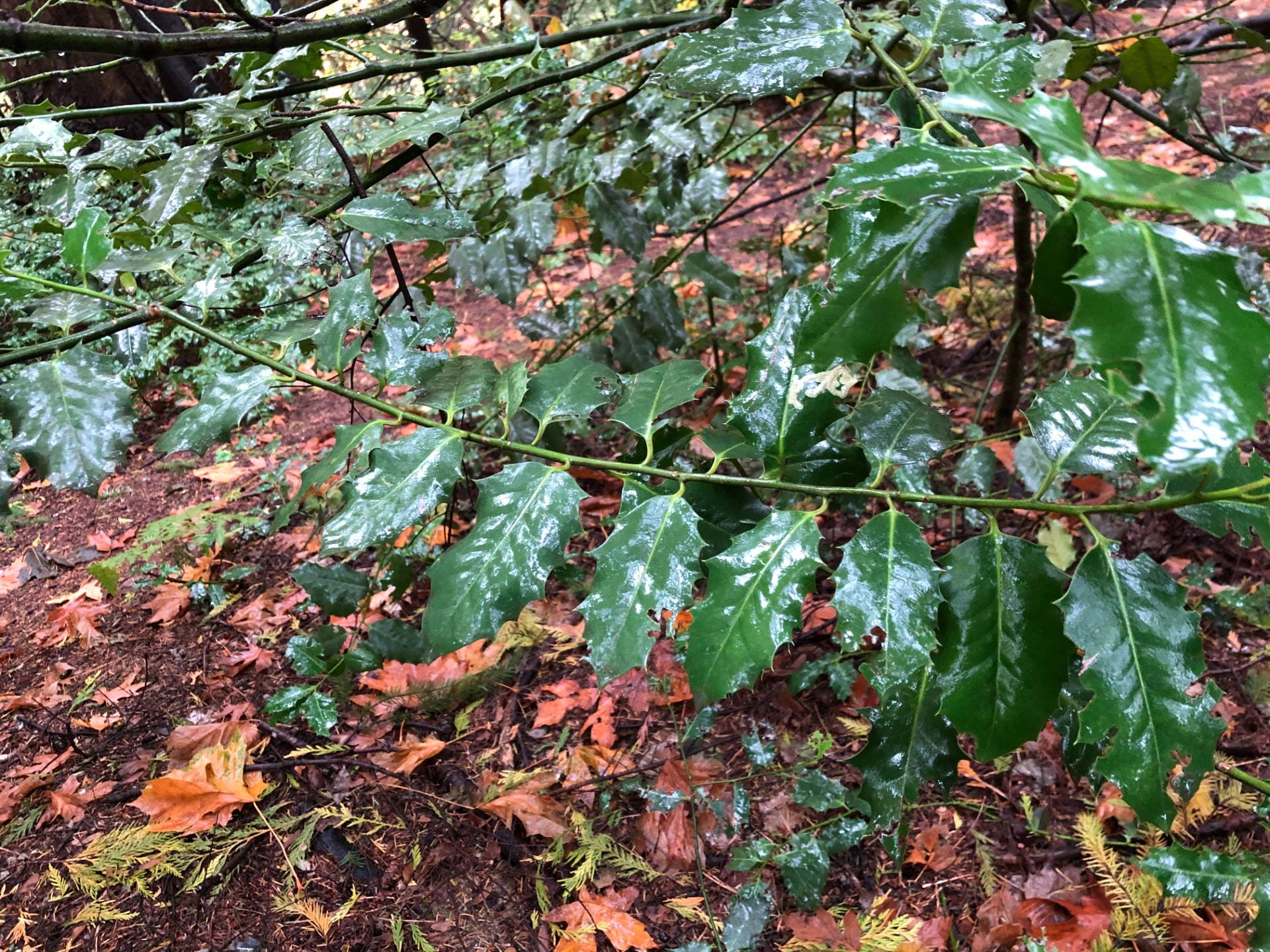
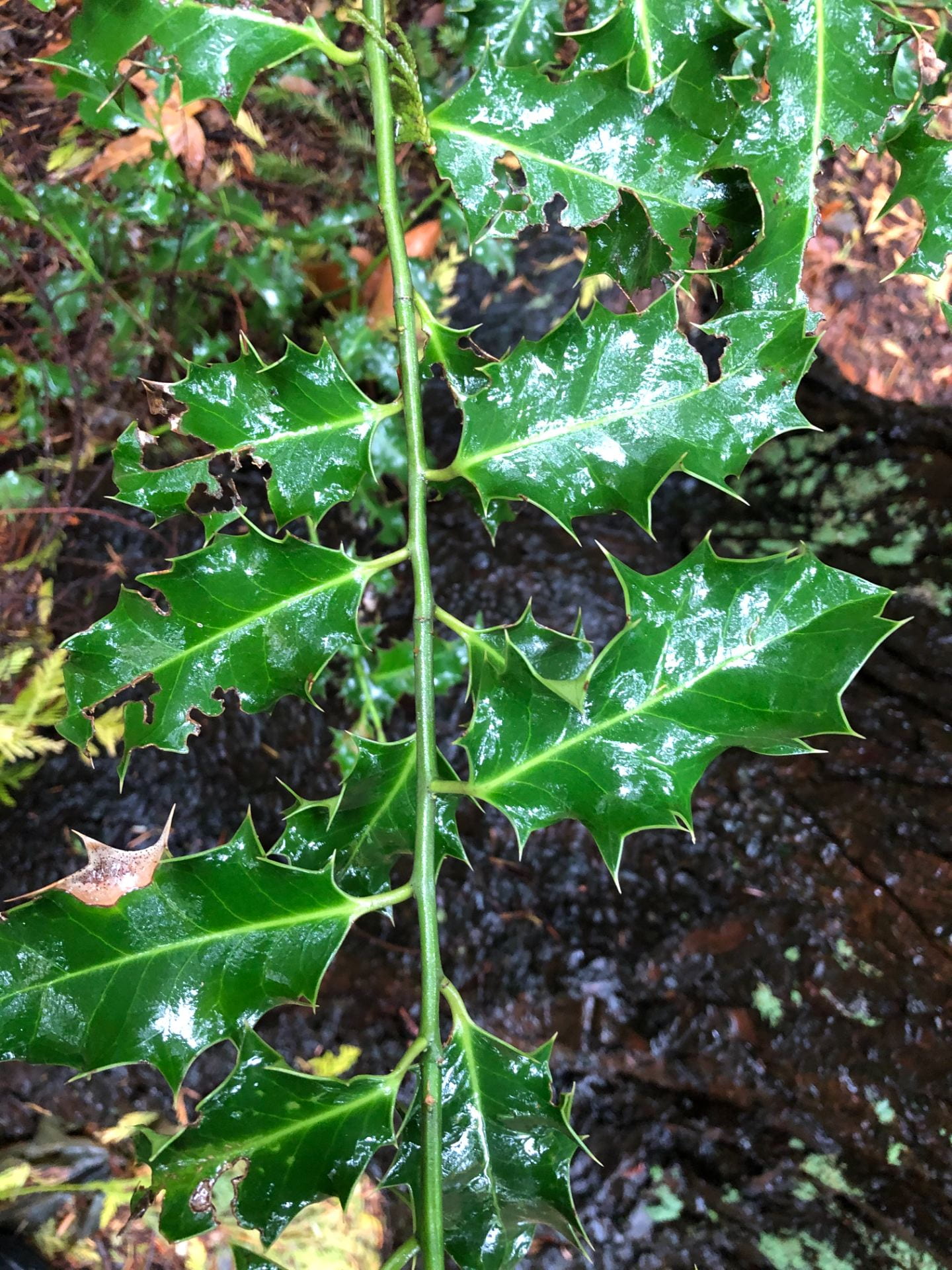
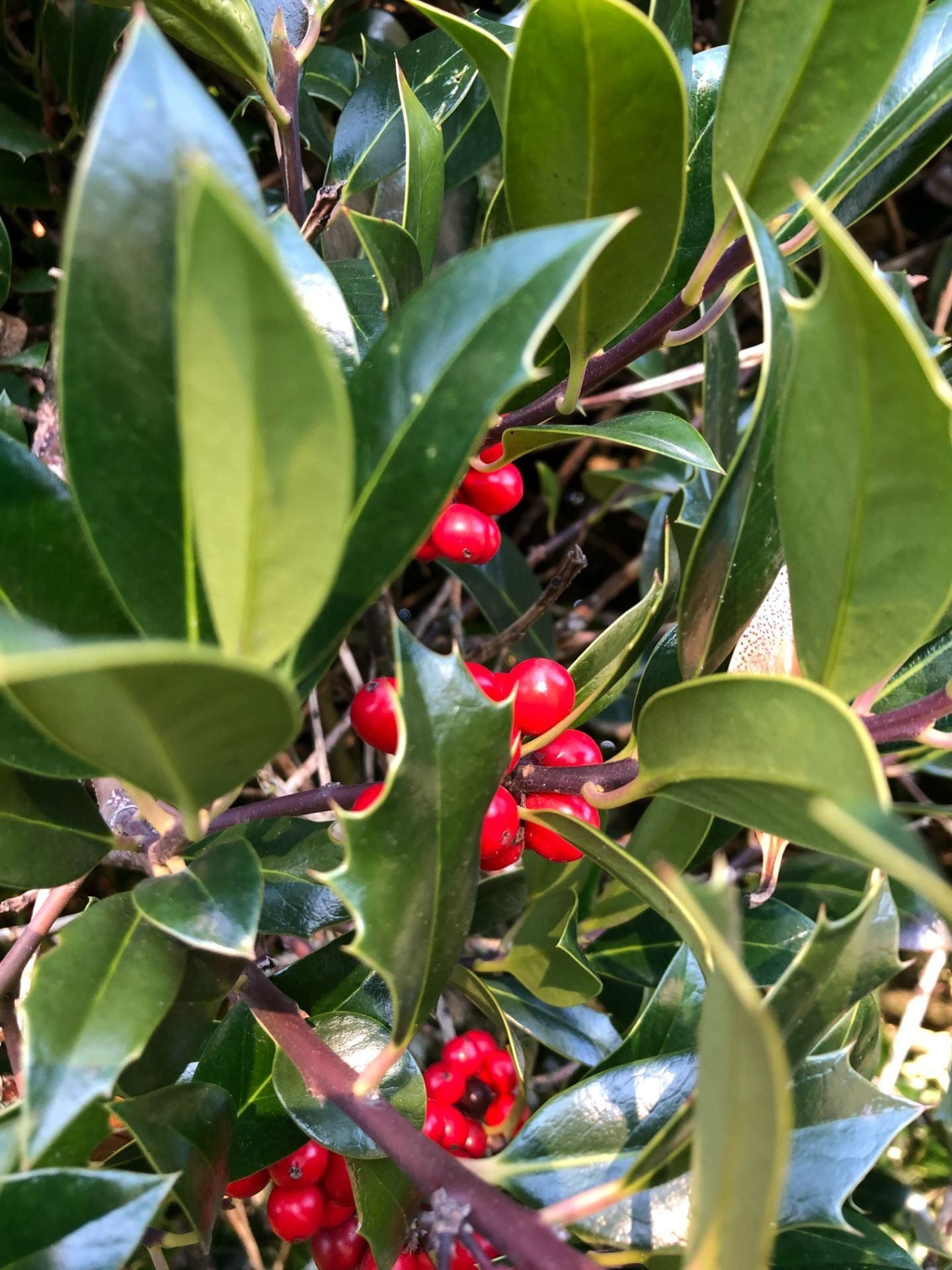
_____________________________________________________________________________________________
UPDATE MARCH 29, 2021:
Last week I noticed flower buds and today I saw a few of the buds have opened up, revealing the cheerful yellow flowers. So head outside this week, and for the next few weeks, to enjoy flowering Oregon grape. I didn’t attempt to smell them so I can’t report to you if they have a noticeable scent or not.

